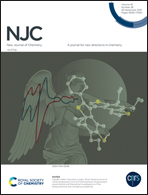Synthesis and characterization of an α-MoO3 nanobelt catalyst and its application in one-step conversion of fructose to 2,5-diformylfuran†
Abstract
In this study, α-MoO3 nanobelts were successfully synthesized by a simple, green and economic hydrothermal method and applied as a bifunctional catalyst for one-step conversion of fructose to DFF under atmospheric air. The structure of the as-prepared α-MoO3 catalyst was characterized in detail by SEM, TEM, EDS, XRD, XPS, H2-TPR and NH3-TPD to better understand the relationship between structure and performance. α-MoO3 nanobelts exhibited high catalytic activities for production of DFF from HMF and fructose in atmospheric air. Under optimized reaction conditions, high DFF yields of 97.2% and 78.3% were obtained by using HMF and fructose as raw materials, respectively. Furthermore, a plausible reaction pathway was proposed for the selective oxidation of HMF to DFF according to the experimental and catalyst characterization results. Importantly, α-MoO3 is a robust catalyst that can be used at least five times without obvious loss in its catalytic activity. In brief, α-MoO3 is an easily-prepared, eco-friendly, low cost and highly effective catalyst which has potential application in one-step conversion of fructose to DFF under atmospheric air.



 Please wait while we load your content...
Please wait while we load your content...